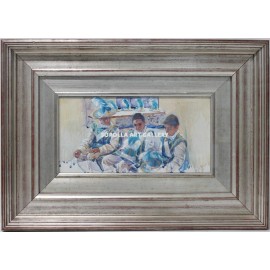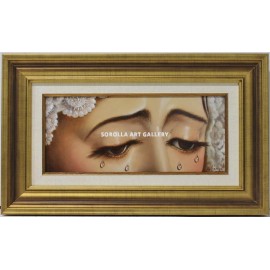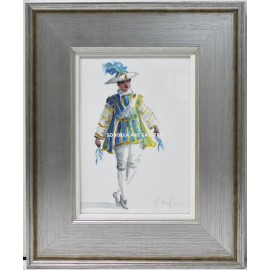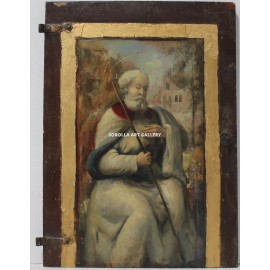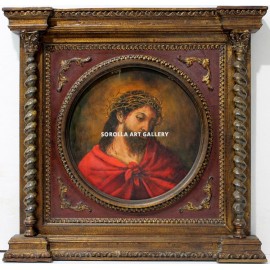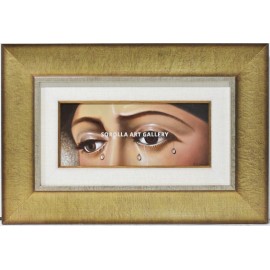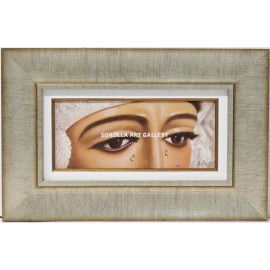Filters
Religious
Sixes of the Immaculate Conception
- Measurements (cm): 57x40
- Technique: Oil on wood
Virgen de la Estrella Eyes
- Measurements (cm): 47x28
- Technique: Oil on wood
Seise Immaculate
- Measurements (cm): 44x36
- Technique: Acrylic on paper
Christ Altarpiece
- Measurements (cm): 57x59
- Technique: Oil on wood
Ojos Esperanza de Triana
- Measurements (cm): 53x34
- Technique: Oil on wood
Sorolla.com is the first Spanish online art gallery to buy paintings, framed pictures, etc. Buy Religious and other styles of paintings.
Religious themes have been present in art of all cultures since the classical period, and was the subject par excellence of Western painting during the Middle Ages. However, it would be since Renaissance when this genre reaches its artistic peak.
During the Italian Quattrocento, Mantegna introduced perspective in his paintings, including monumental figures and references to classical architecture. Piero della Francesca also brought great advances to the fields of perspective, proportion, order and symmetry. During the next century, Leonardo painted one of the classics of the religious gender, the spectacular 'Virgin of the Rocks', which incorporates the chiaroscuro and sfumanto techniques.
In the sixteenth century, Michelangelo Buonarroti, commissioned by Pope Julius II, decorated the famous Sistine Chapel in Rome with frescoes that refer to the book of Genesis.
Later, Raphael painted his famous Holy Child, drinking the influence of Michelangelo and Leonardo, which allowed him to work with his own eclectic style.
During the seventeenth century Caravaggio depicted virgins and saints with his particular naturalistic style, with sharp contrasts of light and shadow that characterize not only his own style, but the painting of the Baroque period in general.
Other great teachers who dedicated some of his canvases to religious painting during this period were Rubens, with his triptych Elevation of the Cross or The Adoration of the Magi, and Rembrandt (Abraham and Isaac) who is the best example of the Dutch school; he worked with golden light and atmospheric effects inspired by the Venetian school.
In the Spanish school we should highlight some important Baroque artists such as Velázquez, Murillo, Alonso Cano, Zurbarán and Valdés Leal.
After the decline of the Baroque in the eighteenth century, we find the great Francisco de Goya, whose personal style anticipates subsequent pictorial styles.
During the nineteenth century, the church lost much of its political and economic power, which was reflected in the decline of artistic commissions. However, in this century such important works as The Christ on Lake Gennesaret Delacroix, the Vow of Louis XIII or the Virgin with blue veil of Ingres were created.
In the twentieth century, artists tend to focus on more personal subjects, making occasional forays into the religious genre. Judith by Klimt The Entry of Christ into Brussels by Ensor, Munch's Madonna or the Last Supper by Nolde, are some of the examples that can be mentioned in this regard.



